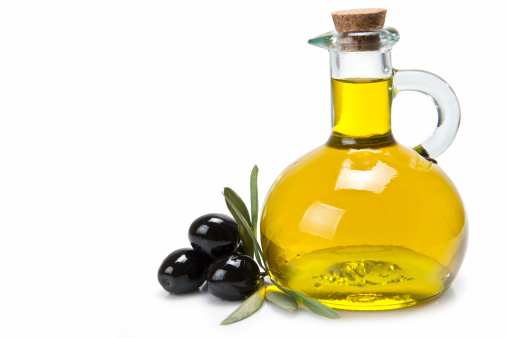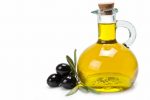
The Standard American Diet (yes, the acronym is SAD) is essentially like eating nothing. Many North Americans unknowingly follow the country’s food guide or pyramid, confident that their country’s scientists and lawmakers know best.
But is that really the case? Western diets, also known as the industrialized diet, the North American diet, or the SAD diet, are essentially all the same thing: an abundance of highly processed and refined foods that are stripped of any nutritional value. The governments that tell us what to eat are controlling our health, so much so that eating healthy in today’s society is like being placed within a carefully designed labyrinth, which directs you exactly where you should go and what you should eat.
The general idea is to get out of this maze, but every time we do, corporations add more paths, preventing us from departing. This is because the foods that we are led to believe are good and healthy for us, may not be as healthy as we once thought.
5 Healthy Foods That Aren’t Healthy
1. Soy
Soy has been marketed as the perfect healthy food for decades, geared as a great option for vegetarians and vegans but there are many concerns with the soybean crops.
It may be a complete protein, but along with corn and canola, it is a commonly used genetically modified food (or genetically modified organism, GMO) in North America. It was first genetically engineered into U.S. soil in 1996. Soybeans are also heavily sprayed with chemical herbicides, containing the carcinogenic glyphosate.
If you eat organic soybeans, does that count as a healthy food? Natural soybeans have various antinutrients, (such as soyatoxin, phytates, saponins, phytoestrogens, trypsin inhibitors, and goitrogens) which make it difficult for you to absorb the food’s nutrients.
You only retain soybeans’ nutritional benefits during proper fermentation, which destroys the antinutrients. Most soy products such as tufu and soymilk contain unfermented soy—so you can cross this off your list of healthy foods.
Unfermented soy can contribute to protein digestion disruption, increased breast cancer risk, and B12 deficiency. Recommended traditional fermented soy products include miso, tempeh, natto, and soy sauce.
2. Multi-Grain/Seven-Grain/Whole Wheat Breads
You will find multi-grain, seven-grain, and whole wheat breads cramming the bakery section of your grocery store; however, these so-called healthy foods may not even contain whole grains.
Quinoa and flax breads can even be found in everyday grocery stores these days. Don’t be fooled! I have even seen GMOs such as canola and soy put into these products.
The flour in the product may also be highly refined, especially if the first wheat ingredient reads “unbleached enriched wheat flour” or “bleached.”
A better option is sprouted 100% organic whole grain bread, which naturally retains the fiber and nutrients from the entire whole grain kernel. They are free from oils, artificial preservatives, additives, stabilizers, or GMOs. It is also a good option for vegans, containing no dairy or eggs. Other 100% whole grain breads are also good options.
3. Greek Yogurt
“Greek yogurt” has been a buzzword among health aficionados as being a healthy food because of its low-calorie, high-protein content combination. It is also a $2.0 billion business.
Although some Greek yogurts are healthy for you, others contain high amounts of sugar and fat. It also may be detrimental for the environment because Greek yogurt production forms a nasty byproduct, acid whey.
The liquid (containing water, lactose, yogurt cultures, and protein) is extremely toxic to the environment, and therefore illegal to dump. It is not certain where all the acid whey is stored; however, some Greek yogurt companies claim that 70% of excess whey can be found in livestock feed.
There are several Greek yogurts with added fruit flavors, sugar, and fat, making plain Greek yogurt the best option for eating healthy. Add honey or tree nuts for flavor. Greek yogurt can be beneficial to reduce the risk of hypertension, containing less than 50 mg of sodium.
4. Dried Fruit
Many dried fruits contain sulfites which can trigger an allergic reaction, such as asthma. Other side effects also include headaches, nausea, diarrhea, and irritated membranes. The sulfites will also reduce the levels of important nutrients, such as calcium, beta carotene, and B-complex vitamins. Sulfites can also be found in wines and fruit juice concentrates.
You can commonly find dried fruits in commercially produced trail mixes in bulk and on grocery store shelves. Dried cherries and cranberries could also contain added sweeteners like corn syrup and sugar, giving this snack a candy-like taste.
Look for dried fruit that doesn’t contain sulfites, which is only there to maintain the bright color. The only ingredient should be the fruit. Dried cranberries, plums, and grapes (raisins) contain twice the potency of fresh fruits, according to a 2005 study in the Journal of the American College of Nutrition.
5. Cheap Olive Oil
Oils are essential fatty acids that your body needs; however, there are various processed olive oils that are denatured. Finding the right olive oil is like finding a needle in a haystack.
Several grocery stores’ olive oils are refined, processed, heated, and bleached, therefore losing its virgin quality. If the oil is not labeled “virgin” it is refined, the olives are cheaper, and it also experiences molecular changes and nutrient losses. When these oils are heated, they become mutagenic.
Unrefined extra virgin olive oil is the highest quality olive oil, extracted from pressing whole, ripe and undamaged, high-quality olives. Extra virgin olive oil studies show that it helps membrane development, cell differentiation, and cell formation.
However, companies can still label imported olive oils “extra virgin” because there aren’t regulatory standards in the U.S. The same oils wouldn’t be labeled as such in Europe.
It is best to purchase your extra virgin olive oil in your health food store, and ask an employee with a nutrition background which oil they would recommend.
Be sure to always check your labels when choosing healthy foods. Unless we grow and make all of our healthy foods from scratch, we will be caught in the maze of what corporations tell us and the versions of healthy foods they sell us.
Sources:
Erasmus, U., Fats that Heal, Fats that Kill (Summertown: Alive Books, 1993), 98, 253, 256.
Weiss, A., “How Healthy Is Dried Fruit?” Real Simple web site; http://www.realsimple.com/food-recipes/shopping-storing/food/healthy-dried-fruit-00000000055378/.
“Supermarket Extra-Virgin Olive Oils,” America’s Test Kitchen web site; http://www.americastestkitchen.com/taste_tests/21-supermarket-extra-virgin-olive-oils.
Brooking, K., “10 Foods That Sound Healthy (but Aren’t),” Cooking Light web site; http://www.cookinglight.com/eating-smart/smart-choices/top-10-unhealthy-foods-00400000054971/.













